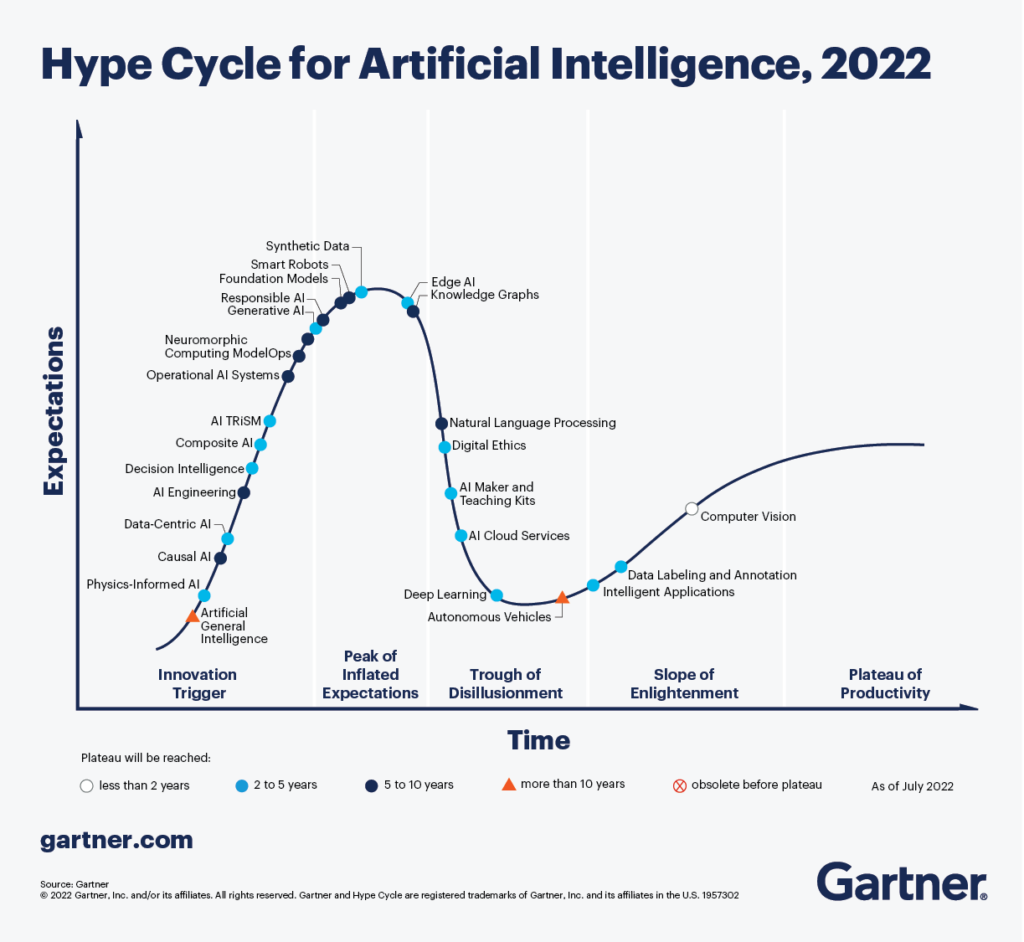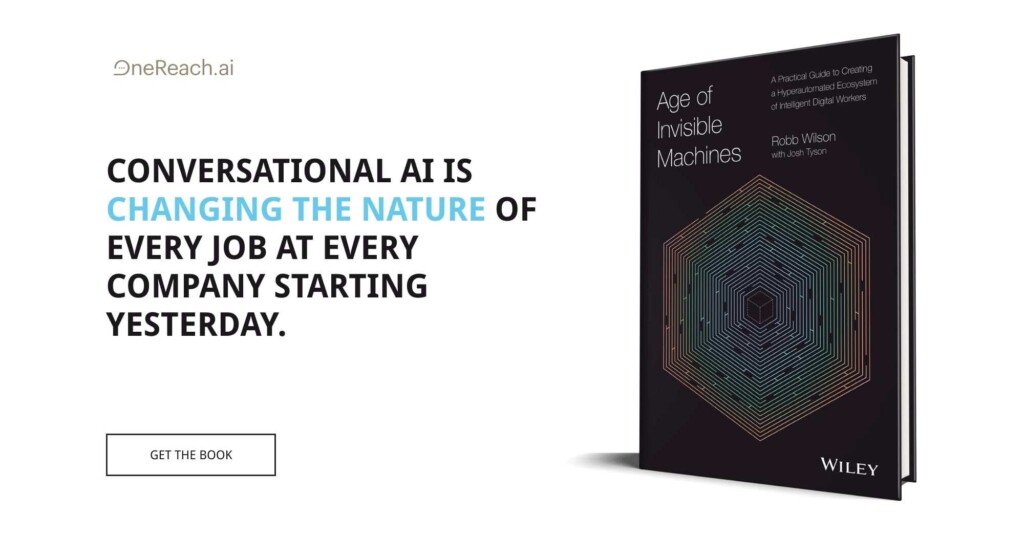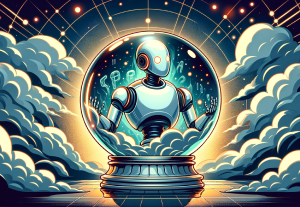The technology can create headlines in the “text2anything” phenomenon that allows people to describe an idea in a few words followed by AI responding with their interpretation.
Disruptive technology like generative AI are programs that use algorithms and inputs to give statistically informed outcomes. It is changing the means of production. Now it is easier than ever for a person with a minimal technical background to write funny stories, make edits to code, or reimagine oneself as a virtual avatar with products like ChatGPT, DALL-E 2, and Lensa.
The products are impressive but the largest impact could be in how generative AI affects design, logistics, programming, and other traditional processes. The hype cycle, the ways people perceive emerging technologies over time, puts generative AI in the early stages of inflated expectations (see chart below).

As consumers gain more access to generative AI there will likely be a shift in how these products integrate themselves into workflows. While there are worries about the effects on creative or administrative tasks, people should not view this technology as competition, but rather as a collaborative effort.
1. Rapid generation means rapid iteration
The ability to type an idea and receive thousands of instant results is reminiscent of the modern-day search engine. However, the twist with generative AI is that results may not appear the same from one user to the next, whether due to slight differentiations in a prompt (the idea a user inputs) or learned behavior about the user. Moreover, this can now be done in ways that mimic conversation, with the user and machine taking turns gathering more information.
This opens up a collaborative moment for rapid ideation. Designers could ask to see several 3D design assets without worrying about the time it would take to amass them all. Writers can come up with interesting headlines or counterarguments from an outline. Given limited time and resources, generative AI can make the research and ideation process much faster. In other words, the opportunity cost of a person generating ideas alone may become too high to justify.
Rather than see these quick methods of generating content as a “hack,” they could serve as inspiration for creators. With more ideas to start with, creators can tweak them to fit a use case or scenario, then focus on designing the experience end to end, a skillset that separates them from machines focused on a siloed task.
2. Create something that builds upon itself
Beyond creating quality ideas or content, generative AI is creating a new system for knowledge management. Morgan Stanley, for example, is building an assistant that teaches its wealth managers to support clients. Not only does this act like a search engine, but it could also monitor a person’s learning performance and start personalizing content. In this way, the assistant learns to become a better teacher as well.

These same natural language algorithms are also being used for drug discovery. Just as algorithms predict the next words in a conversation, they are attempting to predict the layout of new proteins. It would be near impossible for a human to find all the possible combinations a protein could take. However, creating these new AI “workers” to sift through the possibilities opens up humans to test out their ideas rather than generate them.
3. Personalize through conversation instead of transactions
At the grocery store, the self-checkout option is often a less personalized experience than going through a cashier. Typically, there is some conversation involved along with the assistance of a human that isn’t experienced at a self-checkout. Generative AI, through its natural language capabilities, can also alter a customer’s experience.
The larger an organization, the more likely that interactions are purely transactional, a phenomenon that may change with the deployment of AI. As AI continues to personalize experiences through chat, voice, or images, a relationship starts to form with the user. Once that relationship is built, customers are more likely to trust the brand or product. Even in the cases where AI can’t solve all the problems, there are opportunities to introduce human-in-the-loop solutions designed to improve user experiences when the machines can’t find the best solution.
4. Free us from routine tasks
There is concern about what tasks machines can automate and how that could change job responsibilities or entire industries. However, if AI can perform routine tasks, that frees up time for humans to solve more complex problems.
What users want are “integrated tools that make it easier to do regular tasks in a comfortable and familiar place.” This technology allows that integration alongside automation of tasks like finding assets or trying different combinations of code. Low-level automation isn’t created to take jobs, but rather to free up time.
Newfound free time allows people to focus on the overall experience and understand what tasks could be automated and improved. How useful it would be for a machine to not only respond to emails but also to rearrange one’s calendar to optimize productivity.

5. Shift toward collective intelligence
The democratization of large language model products (Dall-E, ChatGPT, etc) means they are being trained on their millions of interactions with people. As with all technological disruptions, society may see such products as a form of techno-solutionism, the idea that technology will come and solve humanity’s problems.
Generative AI is not a magic bullet to societal ills by any means, but it does offer an opportunity for technology to be a collaborative player in our daily lives. Rather than debate how intelligent something is, maybe we should look at how useful new technologies are to us. By augmenting creative processes, such machines could become a “copilot” for many activities.
In order to harness this technology to make incredible user experiences, the technology [itself] should be integrated into the creation of those experiences.
Where to Next?
Generative AI is upending the way people think about what technology does with us. This co-creation aspect will revolutionize the design and research processes of several fields. While there are technical obstacles and ethical considerations upon generative AI’s evolution, it is, for now, living up to the hype.









